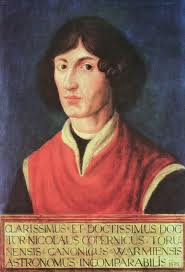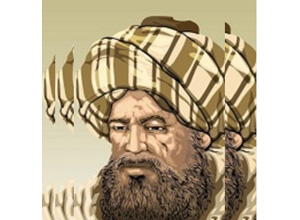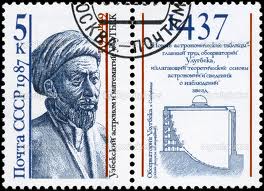
Darul Aqsha
BANDAR SERI BEGAWAN
BRITISH scientist Dr Salah Baimeche in his article published in August 1992 discussed the obscured Muslim’s role in astronomy in the history of sciences. He found that many discussions about astronomy by some Western authors and historians of sciences commonly neglect the contribution of Muslims’s astronomers and scientists to the development of astronomy. “Nothing surprising here either. Out of the so many topics listed not a single reference to Muslim astronomy,” Beimeche said. “The author just jumps from Ptolemy to Copernicus, skipping those 1,500 years,” he added.
 Ptolemy (90-168 was an Egyptian astronomer of Greek descent, who was known for geocentric the ory, while Nicolaus Copernicus (1473-1543) was a Polish polymath and astronomer, known for heliocentric cosmology formula. Some writers believed that Copernicus’ theories were based on those of Al-Tusi and Ibn Shatir, adding that Copernicus made repeated uses of Al-Tusi’s and his followers’ devices.
Ptolemy (90-168 was an Egyptian astronomer of Greek descent, who was known for geocentric the ory, while Nicolaus Copernicus (1473-1543) was a Polish polymath and astronomer, known for heliocentric cosmology formula. Some writers believed that Copernicus’ theories were based on those of Al-Tusi and Ibn Shatir, adding that Copernicus made repeated uses of Al-Tusi’s and his followers’ devices.
 Many of the most basic concepts of modern astronomy were developed directly by various Muslim astronomers who lived between the 9th and 15th centuries, or came about through their influences on later astronomers. Their works were innovative and accurate. They have been used or relied upon by scholars who followed them. Their influences were felt by generations to come
Many of the most basic concepts of modern astronomy were developed directly by various Muslim astronomers who lived between the 9th and 15th centuries, or came about through their influences on later astronomers. Their works were innovative and accurate. They have been used or relied upon by scholars who followed them. Their influences were felt by generations to come
for centuries. At least there are three craters on the moon which were named after them
(Al-Zarqali, Al-Tusi and Ulugh Begh).
Some Muslim astronomers
 Among Muslim astronomers, who gave great contributions in this field, was Al-Farghani (Abu’l-Abbas Ahmad ibn Muhammad ibn Kathir al-Farghani). He lived in Uzbekistan between 805 and 880 AD. He was known for his works entitled Kitab fi Harakat Al-Samawiyah wa Jaamai Ilm al-Nujum on cosmography. It contains thirty chapters, including of the earth, its size, the distances of the heavenly bodies from the earth and their sizes, as well as other phenomena. He also wrote on the astrolabe, explaining the mathematical theory behind the instrument and correcting faulty geometrical constructions of the central disc, that were current then.
Among Muslim astronomers, who gave great contributions in this field, was Al-Farghani (Abu’l-Abbas Ahmad ibn Muhammad ibn Kathir al-Farghani). He lived in Uzbekistan between 805 and 880 AD. He was known for his works entitled Kitab fi Harakat Al-Samawiyah wa Jaamai Ilm al-Nujum on cosmography. It contains thirty chapters, including of the earth, its size, the distances of the heavenly bodies from the earth and their sizes, as well as other phenomena. He also wrote on the astrolabe, explaining the mathematical theory behind the instrument and correcting faulty geometrical constructions of the central disc, that were current then.
 Then, Al-Battani (Abu Abdallah Muhammad ibn Jabir ibn Sinan ar-Raqqi al-Harrani as-Sabi al-Battani) or Albagtenius who lived in Syria between 858 – 929M. His work Al-Zij al-Sabi (The Sabian tables), was very influential for centuries after him. It includes timing of the new moons, calculation of the length of the solar and sideral year, the prediction of eclipses and the phenomenon of parallax. His first notions of trigonometrical ratios used today, and made serious emendations to Ptolemy. Copernicus mentioned his indebtedness to Al-Battani.
Then, Al-Battani (Abu Abdallah Muhammad ibn Jabir ibn Sinan ar-Raqqi al-Harrani as-Sabi al-Battani) or Albagtenius who lived in Syria between 858 – 929M. His work Al-Zij al-Sabi (The Sabian tables), was very influential for centuries after him. It includes timing of the new moons, calculation of the length of the solar and sideral year, the prediction of eclipses and the phenomenon of parallax. His first notions of trigonometrical ratios used today, and made serious emendations to Ptolemy. Copernicus mentioned his indebtedness to Al-Battani.
 Furthermore, Al-Sufi (Abd al-Rahman al-Sufi) of Iran (903-986). His work Book of Fixed Stars describing his observations and descriptions of the stars, setting out his results constellation by constellation, discussing the stars positions, their magnitudes and
Furthermore, Al-Sufi (Abd al-Rahman al-Sufi) of Iran (903-986). His work Book of Fixed Stars describing his observations and descriptions of the stars, setting out his results constellation by constellation, discussing the stars positions, their magnitudes and
their colour, and for each constellation providing two drawings from the outside of a celestial
globe, and from the inside. Al-Sufi also wrote on the astrolabe.
 Al-Biruni (Abu Rayhan Muhammad ibn Ahmad al-Biruni) who was also from Iran (973-1050). He wrote 150 papers, including 35 treatises on pure astronomy, of which only six have survived. He claimed that the earth rotated around its own axis and calculated the earth circumference, and fixed scientifically the direction of Mekah from any point of the globe.
Al-Biruni (Abu Rayhan Muhammad ibn Ahmad al-Biruni) who was also from Iran (973-1050). He wrote 150 papers, including 35 treatises on pure astronomy, of which only six have survived. He claimed that the earth rotated around its own axis and calculated the earth circumference, and fixed scientifically the direction of Mekah from any point of the globe.
 Jabir ibn Aflah[/caption]Jabir ibn Aflah (Abu Muhammad Jabir ibn Aflah) or Geber of Spain (1100 – 1150). He was the first to design a portable celestial sphere to measure and explain the movements of celestial objects. Jabir is specially noted for his work on spherical trigonometry.
Jabir ibn Aflah[/caption]Jabir ibn Aflah (Abu Muhammad Jabir ibn Aflah) or Geber of Spain (1100 – 1150). He was the first to design a portable celestial sphere to measure and explain the movements of celestial objects. Jabir is specially noted for his work on spherical trigonometry.
Copernican reforms.
transmission of his planetary theory to Europe.
Observatories
greatest star catalogue between those of Ptolemy and Tycho Brahe (Danish astronomer, 1546-1601), a work that stands alongside Al-Sufi’s Book of Fixed Stars. He also built an astronomy university in Samarkand and an enormous observatory called the Gurkhani Zi. Taqi al-Din was born in Damascus, Syria, in 1522. He built an observatory in 1577 which
consisted of two large structures placed on a hill overlooking the European section of Istanbul. He wrote 33 treatises on astronomy, including The Observational Instruments of the Emperors Catalogue, describing the astronomical instruments used in the Istanbul observatory. He was the first astronomer to employ a decimal point notation in his observations. He also invented a framed sextant similar to what Tycho Brahe later used in his observation.
Encouraging Factors
The things that encouraging Muslims in the past to observe the celestial objects apparently had to do with their faith, the Quranic verses on astronomy, and ritual activities. There are some Quranic verses that encourage Muslims to observe and study the universe, including the sun, the moon and the stars, which in the end leading them to the recognition on the existence of God as the Creator of the universe.
Allah (SWT) says: “God is the One who made the sun a shining glory and the moon a light, and for her ordained phases, so that you might know the number of years and the reckoning (of time). God created this Truth, He explains the Signs in detail for people who know.” (QS Yunus/
10:5)
 Al-Battani once stated that astronomy has a well earned place among disciplines for its tremendous share in helping man calculate years and months, provide accurate time, mark seasons, observe increase and decrease in duration of days and nights, watch locations
Al-Battani once stated that astronomy has a well earned place among disciplines for its tremendous share in helping man calculate years and months, provide accurate time, mark seasons, observe increase and decrease in duration of days and nights, watch locations
and eclipses of the sun and the moon, witness the movements of planets in their faring in alternating places and signs. “Much more may be added by it through study and scrutiny that invariably leads to further proof and knowledge of the greatness, wisdom, and power
of the Creator (SWT),” he concluded.
The other things that encouraged Muslims to study astronomy were the Islamic faith, ‘Tawhid’ (the oneness of God) that the universe was created by One God; the ritual activities such as Solat, Haj, Fasting in Ramadhan, Aidil Fitri and Aidil Adha that require the determination of precise times by moonsighting; the determination of Ka’bah position as Qiblat for Solat direction; and the traveling needs such as the determination of the right direction to Mekah for haj pilgrimage and there are several Quranic verses that ordering Muslims to travel around the globe.
A true and honest science author or historian would not obscure or forget Muslims’s contributions as the basis for the development of the modern astronomy.
Islamia/The Brunei Times
Friday, 6 August 2010






